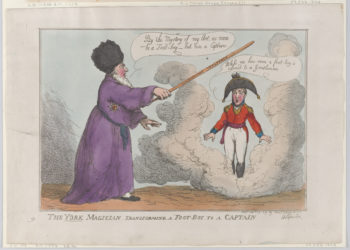By now, I’m guessing that every Scholarly Kitchen reader is aware that after renewal negotiation bogged down for months and then culminated in the cancellation of all Elsevier subscriptions in February 2019, the University of California (UC) and Elsevier have now announced a new transformative deal that includes discounted open access (OA) publishing for UC authors and full online access to virtually all Elsevier journals for the UC community. (See Lisa Hinchliffe’s useful overview from last week.)
As is so often the case with transformative deals, this one is complex; it’s also somewhat controversial, and the scholarly communication discussion space has been buzzing with questions. The good news is that the UC-Elsevier MOU is publicly available and it answers quite a few of them — while also fully illustrating the complexity of the deal.
Here I’d like to focus on six questions that I’ve had about the new UC-Elsevier deal, and share the answers I was able to find.

What Are the Article Processing Charges?
One of my questions was about what kind of article processing charge (APC) UC had managed to negotiate with Elsevier. The MOU indicates, first of all, that APCs are discounted under this deal, and second, that the UC Libraries will pay the first $1,000 of any UC author’s APC, with the expectation that the author’s research funds will cover the balance; if the author has no (or insufficient) research funding to draw upon, the Libraries will cover the remainder. These funds will be drawn from the Libraries’ collections budget.
But what I wondered was: what are the actual APCs? And, as you might expect, the answer is complicated. On the surface it seems like it might be simple: for the first year of the agreement, the anticipated base number of published articles is 4,370, and the charge for that number of articles is $10.7 million. Simple division yields an average APC of $2,449. However, as Ivy Anderson of the California Digital Library (and one of the lead negotiators) explains, this represents a maximum APC spend: “If publishing volume and combined discounted APCs for those articles should fall below $10.7 million, we would pay the actual, lower fees. If (publishing) volume and combined value at discount is high enough to equal or exceed that maximum… the effective cost per article would be” $2,449. And of course, different journals have different list prices for their APCs, which complicates things further.
But wait: if UC authors publish either more or fewer than 4,370 articles in Elsevier journals during the first year of the deal, what effect will that have on pricing in the second year? Read on…
How Are Annual Price Increases Handled?
One question I always have regarding transformative deals, subscribe-to-open, and similar multi-year arrangements between libraries and publishers is this one: what kind of annual price increase is provided for? Clearly there has to be some increase, because the cost of doing business in any organization (yes, including libraries) generally goes up from year to year. But since one reason usually given for these new arrangements is the desire to contain those price increases, I’m always curious as to how this particular issue gets negotiated. In the case of the UC/Elsevier deal, the publishing volume baseline of 4,370 articles is based on UC authors’ publishing volume in Elsevier journals in 2019. The base fee for that service will go up by 2.6% in each year of the deal, thus providing organic growth. However, what UC actually pays will vary from year to year based on a number of factors, notably including the number of articles actually published; as noted above, if UC authors publish fewer than the threshold number, the libraries will pay a lower amount in the aggregate, equal to the actual (discounted) APCs; if they exceed that publishing volume, a prorated fee will be applied.
Is Author Choice Preserved?
Whenever an academic institution adopts an OA policy, an important question arises: do authors at that institution retain the right to publish their work as they see fit, or are they required to publish according to the institutional policy? In the US, it’s quite rare for an academic institution to truly force authors’ hands in this regard; virtually all institutional OA policies allow authors to opt out if they choose, and this has always been the case at UC. The new transformative deal with Elsevier does preserve this element of authorial freedom. Most of Elsevier’s journals are hybrid publications, which means they are subscription journals that offer authors the option of publishing individual articles on an OA basis in return for payment of an APC. There are also a few journals in the Elsevier stable that are published on behalf of societies that prefer to publish on a traditional toll-access basis. UC authors who want to publish in one of these journals on a non-OA basis (and therefore without incurring an APC) are free to do so, by invoking the waiver option to UC’s OA policy.
What Licenses Are Allowed?
I was interested to see that UC authors are permitted to choose between two Creative Commons (CC) licenses for their OA articles: CC BY (the most liberal in terms of granting reuse rights) and CC BY-NC-ND (the most restrictive). I wondered whether this really meant that these are the only two options, or whether defining that scope in the MOU meant that authors could pick any license on the spectrum (perhaps even including the CC0 copyright waiver). I posed this question to UC, and was told that authors really are restricted to those two license versions, and that this restriction originates with Elsevier. I reached out to Elsevier for clarification and got this response from Andrew Davis, VP for Communication: “We have found that authors generally prefer to choose between these reuse license choices or, more specifically, the reuse terms they offer. Offering multiple additional licenses is also operationally unwieldy to implement and adds to author confusion on this issue.” I have to say that I found this response a bit puzzling; I can’t really see why authors would be more confused by four license choices than by two, and I’d be quite surprised if offering the full range of CC options would create more operational challenges than offering a subset of them — but I’m not a publisher and there may be implications at play that I’m not aware of. Clarifications in the comments would certainly be welcome.
Even as currently written, this range of choice is sure to be controversial in the OA advocacy community, given that for some in that community, CC BY is the only acceptable license. (Some go so far as to say that unless it’s published under CC BY or the equivalent, it’s not OA at all.)
What about Perpetual Rights?
Under a conventional subscription model, the library typically pays for content as it’s published from year to year, and retains perpetual access to all paid-for content going forward (usually at a nominal recurring administrative cost, since online archiving and access are being provided by the publisher). But the UC/Elsevier deal, like all publish-and-read transformative arrangements, flips the model in a way: UC is paying to make a subset of Elsevier’s content — articles written and contributed by UC authors — available on an OA basis, and gets access to the rest of Elsevier’s journal content as something of an add-on benefit. So does UC get perpetual access to that content, the way it would if it were paying for it directly in the usual way? The answer is: sort of, but on an opt-in basis. As Ivy Anderson explains (pay close attention, because this is complicated):
“The optional perpetual rights fee covers perpetual rights to content published in that year (as in a typical subscription). The $1M fee covers perpetual rights to our previously subscribed title list (with swapping provisions as in a typical license) — there is also a modular perpetual rights option for more selective perpetual rights to individual or added titles. We can purchase full or modular rights for any year of the contract for the price enumerated in the MOU (i.e., there are no [year-on-year] inflationary increases). We can also choose to pay those fees in any year of the contract, we don’t have to purchase them in the specific year of coverage.”
How Many Elsevier Journals Are Included?
As we all know, even comprehensive Big Deals aren’t always fully comprehensive—they may include virtually all journals, but rarely every single one. Elsevier’s Big Deal is no exception, nor is the new UC/Elsevier deal. I asked Elsevier for clarification on this, and received the following response, again from Andrew Davis:
“The UC agreement includes all Elsevier journals that offer an OA option and are eligible for inclusion in transformative agreements. This represents the overwhelming majority of our portfolio, and covers the overwhelming majority of UC articles published with Elsevier. There are a small number of journals we publish on behalf of society or other third party partners, where we do not have permission to include these in transformative agreements and/or that are subscription-only. There are also some journals that offer OA publishing but of course wouldn’t make sense for inclusion in a transformative agreement per se e.g., subsidized or diamond journals – these are available for OA publishing, including to UC authors, but do not charge an APC.”
By no means have I covered all the questions that people might have about this new arrangement. I’d be very interested to know what others have occurred to our readers. Please comment!
Discussion
38 Thoughts on "Six Questions (with Answers!) about UC’s and Elsevier’s New Transformative Deal"
Maybe other publishers have different workflows but here’s what happens to license information in my experience.
The license info is automatically added during production based on the options selected during submission/acceptance. Then this is automatically transferred across to article metadata exports (eg Crossref XML).
So the extraordinary technical challenge is adding more radio buttons to the online form, then going down the line and programming matching “else if license =“ statements.
Is that really an extraordinary technical challenge, though? It sounds more to me like a pretty ordinary technical challenge, one that would be well within the capabilities of a company with Elsevier’s resources.
But I’m not a programmer either, so maybe this is a much greater barrier than it sounds like to me.
I’m quite surprised that the average APC is only discussed here relative to the libraries spend. The contributions of authors via their funding/grants is predicted to bring the first year total to $13m (https://twitter.com/ivyleander/status/1372324341724028930?s=19). And even if that is spurced from grant funding, it is still institutional spend and Elsevier revenue.
If I understand correctly–and heaven knows I may not–both the $10.7 million figure and the $13 million that Ivy invoked in her Twitter response represent total institutional spend, including from grants. The lower figure is what they would pay at the estimated volume of article production; if that volume is higher the payment will go higher, and I think Ivy was suggesting that $13 million is what they estimate as the high limit for the first year.
So if we look at the average APC of $2,449, based on a division of $10.7 million by 4,370 articles, in an average case that would implicate $1,000 of library funds and $1,449 of institutional funds in the form of grants. I think.
I would certainly welcome Ivy or others at UC/CDL to clarify this point since we have both pondered this extensively and came away with different perceptions!
The $10.7M is the total amount that will be charged for the first 4370 articles, taking into account both library and author spend. The $13M figure is an estimate that results from several factors. The first variable is author grant participation. Since we can only estimate this, the libraries will prepay the full $10.7M. Any author payments made during the year will be credited back to the libraries; these credits will be held by Elsevier in a credits fund and used to fund other components of the agreement (article growth above 4370 articles, and the remaining Cell Press and Lancet journals once they are ‘turned on’). Also as Rick has noted, there is an optional $1M for perpetual rights; there is also an optional subscription fee for Clinics journals that aren’t APC-eligible. We’ve included these optional components in our $13M estimate. Finally, there is a ‘COVID’ discount applied against the total. The sum total of all of these components is approximately $13M in revenue collected by Elsevier; but a portion of that is in the form of library pre-payments on behalf of authors, which will be held as credits and applied to other elements of the agreement.
Thanks Ivy. Perhaps I mis-understand the true-up part of the agreement but it looks to me like eventually — if article publishing levels are high enough — Elsevier makes revenues over the annual caps because of the way the credit values are distributed. This may still be a great deal for UC relative to your goals (one thing that I think many of the critiques do is criticize the agreement for not achieving other goals that were not UC’s goals) but it makes me think that we won’t ever know the average cost except retrospectively!
Ultimately, I agree with the DEAL leadership that a P+R per article calculated fee (which is what I would argue this is) is not the same as an APC and though we might compare them we shouldn’t confuse them. When an author pays an APC, they pay for an article to be open; when UC pays it is getting OA publishing (calculated via discounted APC fees) and reading of subscription content, which looks to me as more value for money than just the publishing alone.
You’re correct, Lisa. The end of agreement true-up will allow Elsevier to keep any remaining credits up to the value gap maximum amount, which is essentially the full discounted APC value of the 1st 4370 articles published in any given year, up to a fixed maximum. If there are remaining credit funds after that, they’re split 60/40 between UC and Elsevier. So the end of agreement true-up does offer an additional deferred revenue opportunity to Elsevier, as well as an additional deferred refund opportunity for UC. We’ve done a fair amount of modeling of these various components, as you can imagine, and we think this will still represent good value for UC as a whole, and for our authors, due to the many cost controls built into the agreement.
I’m sure that the level of difficulty will vary across organizations. For a large publisher like Elsevier there will be some challenges just in accommodating small and large workflow variations among so many journals. I’d like to advocate that publishers large and small adopt standards like NISO ALI (http://www.niso.org/standards-committees/access-and-license-indicators) and XMP to ensure that license information in the PDF and in page metadata (and in Crossref) is as machine-readable and consistent as possible to help with tools for compliance checks, reuse options, and similar tasks for the mutual benefit of all stakeholders.
“UC is paying to make a subset of Elsevier’s content — articles written and contributed by UC authors — available on an OA basis”
Is this just for UC, or will that content be available OA for all subscribers?
The articles that are published on an OA basis will be genuinely OA — freely available to all. (Though I guess it’s worth pointing out that many in the OA movement will not consider the articles published under CC-BY-NC-ND to be “genuinely OA.”)
Maybe you know this, Rick, or maybe Ivy can answer here, but what are the short- and long-term cost savings (if any) that UC is projecting from this arrangement? I know budget isn’t the only driver here, of course, but the financial benefit needs to be apparent or this arrangement won’t last long. Just based on the back-of-the-envelope figures you’ve provided here, it seems a risky. For example, what if APCs start climbing through the roof (oops…), leaving libraries on the hook for massive excess charges (because surely grant agencies are going to balk at paying $9,000 APCs if the UC library is backstopping this payment)? If library funds start depleting too rapidly as APC prices start climbing out of sight with no downward pressure, then authors will make less use of this arrangement (because funds aren’t available), and will end up publishing more in their “second choice” journals that are either subscription-based or have lower APCs, or are non-Elsevier journals. Each way, the library loses—by running out of money, by publishing fewer OA articles than hoped, and/or by publishing less than the target number of articles. Hopefully this is wrong. I think APCs are the wrong tool for the job and are only going to magnify global access inequity, but if we’re going to use them, then we either need to invent some sort of containment mechanism (because price competition isn’t there), or be prepared for a lot of collateral damage.
Someone from UC would definitely need to respond regarding anticipated budget savings.
As for whether APCs are the right way forward for OA–this is a concern that has been raised several times already in response to the UC/Elsevier announcement, notably by the libraries at MIT and U Virginia (see links to those responses in the text of my piece). For my part, and for what it’s worth, I don’t think it really makes sense to think of any particular OA strategy as “the” solution going forward. I strongly suspect–and hope, frankly–that the future scholarly communication ecosystem will be characterized by a diversity of publishing and funding models. Short of some kind of quasi-religious commitment, I don’t see why anyone would think that any single model is uniquely and universally the right one.
We are projecting a cost avoidance of 7% compared to what our combined library and author spend would have been in 2021 had we continued a subscription agreement, and had a small percentage of our authors paid for APCs independently. We expect this level of savings to continue throughout the agreement. Although it’s true that APCs are not capped, they are discounted, and there are very strong cost controls in the agreement. We hope that author participation will also help to constrain APCs, as should happen in a functioning market. If our authors find these APCs too high and choose to publish elsewhere instead, we wouldn’t consider that failure at all – it would signal a healthy, functioning market in which authors are making value-based choices. Under this agreement, we do not pay for articles that are not published by Elsevier, so our money truly is following the choices of our authors – there is no target number of articles. There is a minimum expenditure, but that minimum is quite low, keyed to a significant drop in publishing.
Ivy’s comment points to one very important and fundamental difference between the market for access to content and the market for access to publishing services: the former is a market of complements, while the latter is a market of substitutes. An author offers to the market a unique product: an article that no one else has written, reporting on a study that no one else has done. Because it’s unique, that article operates in a market of complements–the fact that you have access to one biology article doesn’t mean that you have less need for a different biology article, because each article offers unique content.
Typically the author trades that article to a publisher in exchange for services that are functionally quite similar to the services provided by other publishers: Cell and the Lancet and Nature aren’t the same, but getting published in one of those journals is functionally quite similar to getting published in one of the others. This means publishing services are sold (or traded) in a market of substitutes.
So one of the interesting things that is accomplished by publish-and-read agreements like UC/Elsevier’s is, as Ivy points out, that it moves the customer’s economic behavior out of a less-competitive market of complements and into a more-competitive market of substitutes: UC’s money may or may not stream into Elsevier’s coffers depending on how well Elsevier’s publishing services compete against those of other publishers. It will be really interesting to see how well Elsevier does in competing for UC authors’ articles.
Thank you Ivy, Rick. All very interesting. Godspeed UC and here’s hoping that you roll double sixes. My main concern remains that funders are going to laugh at the prospect of paying $10k APC charges, and that UC will be left holding the bag and/or authors will need to look elsewhere to publish (and as APCs increase, this “elsewhere” may be in an entirely different tier than Lancet, Cell, and Nature, which isn’t good for these journals or for science). Whether all this jockeying exerts downward price pressure or simply throws a monkey wrench into the science communication system is what we’ll be waiting to see. My money is on the monkey wrench, not because I’m a grump but because people are basically greedy and are going to milk the free money system for as much as they can. The top tier journals are all going to increase their APCs (why wouldn’t they?) and the result is going to an entire strata of journals written by the landed gentry, and paid for by funders who are willing to cough up big fees for the big prestige. And in the process, the UC library is going to be put into a vice, pressured by researchers to cover high fees that won’t be covered in their entirety by NIH and other government funders. Hopefully, though, this is entirely wrong and everything will work out splendidly. It would be a great day for scholcomm if this effort can help create a new healthy, functioning market. Fingers crossed.
For what it’s worth, I think it’s entirely possible both that competition in the market for publishing services will exert downward pressure on APCs in the aggregate, and that publication in the most desirable venues will become more expensive than it is now.
Look at the auto industry, which operates in a classic market of substitutes: competition in that marketplace is fierce, and cars may be much cheaper overall (in real dollars) than they were 50 years ago–but that doesn’t mean a Bentley will ever be as affordable as a Kia.
I am still trying to understand if there is a true cap on this deal or not. By “true cap” I mean not just a cap on what UC *Libraries* will pay, but a cap on the total amount paid to Elsevier by UC Libraries plus UC authors. Hypothetically, if Elsevier publishes more papers from UC authors above and beyond the 4,370 papers anticipated and above and beyond the additional papers to be covered by the article growth fee, what happens? Let’s say that Elsevier publishes 1,000 more papers than anticipated by the article growth fee. There are no more library funds to pay for these papers. What happens? Does Elsevier A. Not publish the papers; B. Collect whatever funds the authors might provide and keep those funds; C. Require a full APC to be paid by the authors from grant funds or department funds or whatever; D. Publish the papers at no charge to the author; E. Something else.
Page 6 of the MOU does show an “article growth maximum” for each year, which I’ve been assuming means a cap on total expenditures in each year.
Yes but is that article growth maximum the maximum amount that UC Libraries will pay or that Elsevier will receive (with the delta coming from UC authors)? It also does not address the question of what Elsevier will do. Will Elsevier publish an additional 1,000 articles (or 2,000 articles) at no additional charge to authors? Will they put the extra articles behind a paywall? Will they be able to collect funds from authors but not the library?
The answer to this question is essential to understanding the impact of this deal on the many society journals that partner with Elsevier.
There is no cap on the number of articles that can be published OA, and no change to the author experience – authors will contribute (or not) at the same level throughout the entire agreement term.
That is good to hear. So what happens in the event that Elsevier exceeds the number of papers anticipated by the article growth fee? After that pot of funding is exhausted, what happens to the next paper that is published from a UC author by Elsevier? Or the next 1000? What if an author of one of these additional papers has no funding? Does Elsevier publish these OA at no additional cost to authors? (in which case there is a true cap). What if they do have funding? Do they keep the funds? (in which case there is not a true cap). It seems like this a binary situation unless I am missing something: either there is or is not a cap on what Elsevier could be paid *by authors.*
It is always good to check what Creative Commons says about the CC-BY-NC-ND License: https://creativecommons.org/2020/04/21/academic-publications-under-no-derivatives-licenses-is-misguided/
And what others have said about CC BY, too: https://www.historians.org/news-and-advocacy/aha-advocacy/aha-expresses-concerns-about-potential-impact-of-plan-s-on-the-humanities
As always, there are lots of opinions on these topics, all informed by the interests of those who hold them.
As I told Rick originally (although this didn’t make it into his report), we will be continuing to discuss license types with Elsevier, as we would like (and our authors want) additional options, such as CC BY NC (but not ND).
The cited blog in CC is a straw man argument which does not address the reason that many authors prefer ND. It isn’t about misconduct, it is about control of the expression of ideas. This includes the right to approve translations.
Just to be clear, though, neither CC nor copyright law is “about control of the expression of ideas.” Ideas aren’t copyrightable; copyright and licenses don’t constrain anyone’s ability to express ideas. What copyright and licenses are about is control over the disposition of documents and their content. Those documents will contain specific expressions of ideas, but neither CC nor copyright has any effect on people’s right or ability to express ideas. And more to the point of your comment, authors who prefer ND (or who prefer not to use CC at all) are not trying to control other people’s expression of ideas; they’re trying to maintain control over their own expressions of ideas.
One clarification: UC’s OA policy, like most institutional OA policies, is a green OA policy. It’s completely separate from whether authors want to have their articles OA at the journal publisher’s site.
Authors can choose not to publish OA in a hybrid Elsevier journal, but they don’t need to get a waiver of the OA policy to do it – it’d just be part of the publishing workflow. Meanwhile, they could waive the policy for a particular article but still publish it OA.
Good clarification, Katie, thanks. From the MOU: “Corresponding authors publishing in hybrid journals will continue to have the choice to publish their journal articles on a subscription basis and these authors will not be required to request a waiver of UC’s open access policy.”
I can see how this might have been unclear Rick, perhaps the language in our MOU could have been clearer. What that provision is actually intended to say is that authors who choose to publish their articles under the subscription model, and who therefore must sign Elsevier’s standard publication agreement, will no longer be required as part of that agreement to procure a waiver of their institution’s OA policy. Elsevier’s current publication agreement requires authors publishing under the subscription model to explicitly procure a waiver of their institution’s OA policy. That requirement will now be dropped from Elsevier’s standard publication agreement – for all authors worldwide, not just for UC authors. This was very important us as as one of our faculty’s open access principles. We were very pleased that Elsevier agreed to make this change to their standard author agreement after a significant amount of negotiation and advocacy on our part (and of course on the part of others as well). This is one of the constructive changes that we sought on behalf of, and as members of, the larger scholarly communication community.
Putting into context UC OA policy waivers: Elsevier aren’t even in the top 5 of publishers who request waivers of UC’s OA policies. Only 13 waivers have been requested as of February 3, 2021 per the UC Office of Scholarly Communication:
https://osc.universityofcalifornia.edu/scholarly-publishing/uc-open-access-policies-background/publisher-communications/
“That requirement will now be dropped from Elsevier’s standard publication agreement – for all authors worldwide, not just for UC authors.” This is significant. Glad to hear this change.
Thank you for this excellent digest and analysis!



